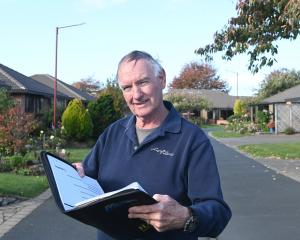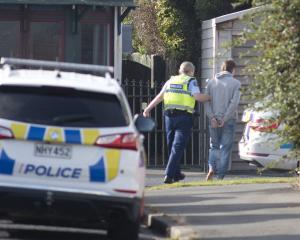Oil company Anadarko yesterday said its own modelling of its Canterbury Basin prospect showed only a ''remote chance'' of oil reaching shore.
Greenpeace announced the findings of a commissioned report early yesterday, which said while most findings indicated any oil spill from the southern Canterbury Basin would be pushed east towards the Chatham Rise, in the worst-case scenario oil could wash up in Oamaru and at Taiaroa Head in concentrations which would kill wildlife.
Anadarko plans to use the new drill ship Noble Bob Douglas in the Canterbury Basin next year.
Shell is yet to make a final decision on whether to drill in the Great South Basin, in a venture it believes has a 50:50 chance of going ahead.
Anadarko corporate affairs spokesman Alan Seay said when contacted yesterday he agreed with a comment by chief executive David Robinson, of the Petroleum Exploration and Production Association New Zealand, labelling the Greenpeace report ''science fiction''.
''Greenpeace are dead against the oil industry and flipping up fears of people is part of their approach,'' Mr Seay said.
Anadarko had done its own modelling of a potential oil spill in the southern sector of the Canterbury basin, about 100km north of Dunedin, in preparation for drilling, he said.
He said of the Greenpeace survey: ''Science fiction is what it is''.
''A Gulf of Mexico event in the Gulf of Mexico again is extraordinarily unlikely. They [Greenpeace] are assuming the industry learnt nothing from it,'' Mr Robinson said.
He said the industry had available several versions of the ''capping stack'', which was manufactured to stem the Gulf of Mexico sea-floor leak, available to get to any spill.
Both Mr Seay and Mr Robinson said there was always some risk of a spill.
''Yes, there is an element of risk in any human endeavour,'' Mr Seay said.
Mr Robinson estimated that capping a spill in New Zealand would take ''weeks, not months'', as happened in the Gulf of Mexico.
Mr Robinson said oil and gas exploration was a ''very significant'' contributor for New Zealand's economy and that with or without exploration, New Zealand still faced daily risks in shipping and transporting fuels around the country by land and sea.
On the question of contingency plans, Mr Seay said Anadarko had detailed plans in place and the use of equipment, which could be brought in to New Zealand from sites around the world, should they be needed.
The industry overall had learnt from the Deepwater Horizon Gulf of Mexico spill and had improved science and design and planning for well designs, with the emphasis being on ''preventative'' measures to not cause a spill.
''There's a huge emphasis on prevention, to avoid and [then] mitigate any spill,'' he said.
He noted that Anadarko believed there was a 95% chance of finding gas in the Canterbury Basin, and small levels of condensate, a light crude oil, which evaporated when exposed to sunlight.












